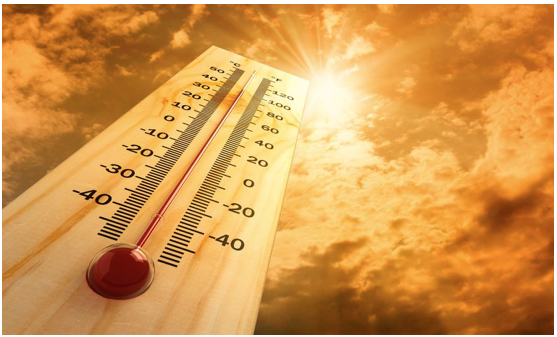WELLNESS--With climate change on the rise, many of us are feeling the effects of brutal ongoing heat and humidity, and if one is not careful, heat stroke can ensue.
The Mayo Clinic defines heat stroke as “a condition caused by your body overheating, usually as a result of prolonged exposure to or physical exertion in high temperatures. This most serious form of heat injury, heatstroke can occur if your body temperature rises to 104 F (40 C) or higher.
Heatstroke requires emergency treatment. Untreated heatstroke can quickly damage your brain, heart, kidneys and muscles. The damage worsens the longer treatment is delayed, increasing your risk of serious complications or death.” Not drinking enough water or drinking alcohol are both high risk behaviors for heat stroke.
While pets and the elderly are most at risk, it can also be dangerous for people who work outside or exercise in the heat. The risks are higher in high humidity because moist air traps dampness and heat in our bodies making our cooling systems less effective
There are a number of ways to tell if someone is starting to feel heatstroke included slurred speech, elevated heart rate or vomiting. Headaches can also be an early indicator that the body is overheating and if the person has flushed skin or a rapid heart rate these are also warning signs that the person should stop the physical activity and get inside.
If anyone has more than one of the symptoms above it is quite possible they need emergency health services. Call 911 immediately. If emergency services are delayed or unavailable it is important that the person is cooled by whatever means necessary until medical services arrive.
If you suspect someone is experiencing heat stroke there are a few steps to take. If it’s safe to move them try to get them indoors in the air conditioning as soon as possible. Sometimes if someone faints or feels dizzy people will gather around them. Be sure to tell people to step back so the victim can breathe fresh air and not feel more suffocated and hot. Fan the person if you are outside and can’t get them to a cool place and apply ice or ice packs to the patient's armpits neck groin and back if possible.
If you are indoors and the patient can be safely moved without risk of falling (dizziness and fainting are common with heat stroke) get them to cold bath or cold shower where they can sit in the tub and cool down safely. Stay close and be sure the victim does not fall over and hit their head. A tub full of icewater is also helpful until medical help arrives.
(Christian Cristiano is an acupuncturist in LA, TV host of Wellness for Realists and writes on wellness regularly for CityWatch. Christian can be reached at 310.909.6956 twitter: @CristianoWFR)
-cw
